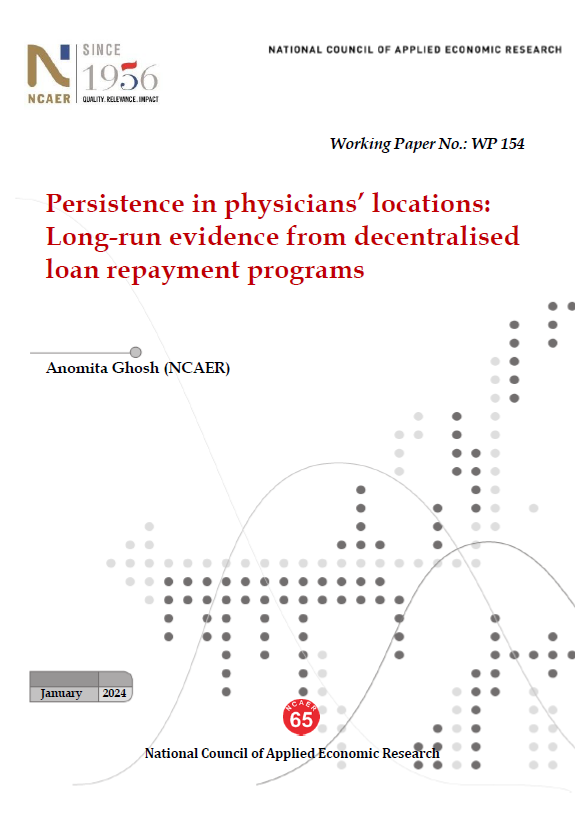Persistence in physicians’ locations: Long-run evidence from decentralised loan repayment programs
Anomita Ghosh
January 2024
Do temporary labor supply programs cause physicians to move to and stay in undesirable areas? To what extent do these programs improve the health of the elderly and non-elderly population in those areas? I investigate these questions by studying state and local loan repayment programs for new eligible physicians which were rolled out over the last four decades in hundreds of counties across US states. Leveraging a new longitudinal dataset that tracks all physicians from medical school to mid-career, and exploiting both space and time variation, I find that these policies increase the number of physicians by 5% in treated counties relative to untreated counties in the state. The inflows of physicians are driven by higher paying eligible specialities. The programs continue to influence physicians’ location decisions even after they end –- effects persist for at least ten years after the minimum obligation period. Furthermore, the programs modestly spur trainees to enter eligible specialities in treated states by substituting away from ineligible specialities. Treated counties also see the elderly increase their visits to physicians while reducing those to the emergency rooms. Using patient level data from California, I demonstrate these results are not driven by selective admission of patients to treated hospitals. Overall, my findings emphasize the importance of policies that reduce financial frictions for highly skilled professionals –- in shaping not only their migration and labor market trajectories, but also the health outcomes of people in their communities.







